Rob Pulham
Western Thunderer
Malcolm Stelfox although no longer trading is still active, he posts regularly on the GOG forum.
Thanks Rob - forgive me if I should know this, but what's the GOG forum? Googling produces a site I'm sure isn't relevant...Malcolm Stelfox although no longer trading is still active, he posts regularly on the GOG forum.

Hi Chas I have been looking for it . Apparently they do pop up occasionally.Thanks John - I've never heard of them, but I'll do some research...
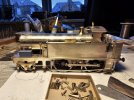
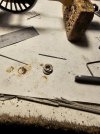
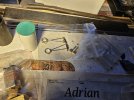
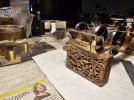
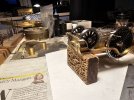
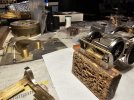

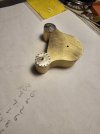
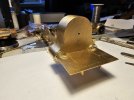
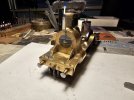
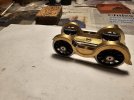
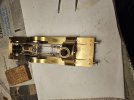
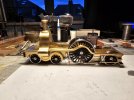
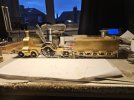
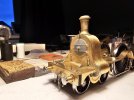
NickLots of significant progress in the last few days. I finished fitting up the impossibly complicated brake system first. Next I made some cylinder heads in nickel-silver as the ones on the etches were in brass. I soldered them to a sheet of NS though and drilled through the half etched 'rivet' holes. I soldered fake fastners into the holes
View attachment 203357
As can be seen, I also added some fake fastners to the cylinder clothing at the bottom of the smokebox.
The next step was to make the front footplate, chassis sections and bufferbeam. The buffers were made self contained, and fitted within the plastikard buffer plank.
View attachment 203358
Lots of fake fastners were used on the front of the chassis!
View attachment 203359
The wheels were placed in the chassis and the rear section of footplate fitted up such that it was perfectly level. This was done on a surface plate for accuracy. The footplate was temporarily tacked to the chassis, and the complete smokebox and front chassis soldered to it. Some brass angle was used as a strengthener, and I may add some temporary bracing before the boiler is added to stiffen the structure.
On the real loco the bogie splasher is attached to the chassis, and is releaved to fit round the cylinders. On my model the splasher is fixed to the bogie, and I cut away a small section, very similar in shape and size to the real loco, and enlarged it, bit by bit, until the loco went round a 6' rad curve!
View attachment 203360
As you can see it didn't need much grinding.
With a rolling chassis complete I thought it would be good to fit up the valve gear and check for free running. I had recieved a pair of 3D printed valve blocks from Mike Hopkins at Scale Factor (he's sent quite a lot of fittings for the build,) and these were fitted to the chassis.
View attachment 203361
The eccentric straps were fitted to the eccentrics on either side of the gearbox. The expansion links were hung on the underslung lifting links. The inside motion worked first try, which made me very happy. I must be getting reasonably good at it!
View attachment 203362
View attachment 203363
View attachment 203364
There's a couple of minor things to add to the chassis to complete it, then just the bodywork to complete. Not long now.....
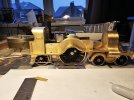
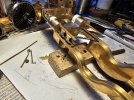
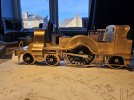
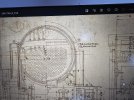
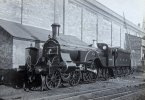
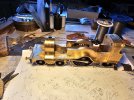
Or 3D printed...Nick,
your boiler looks very challenging in sheet metal. It could be machined from suitable thick wall tube (or solid bar)
atb
Simon

. . . . fitted without any drama or fakery.
All very satisfactory and not a 3D print in sight!

 Most satisfactory
Most satisfactory 

She does appear quite often in Nicks photos, i wonder if ????????????Nice work Nick: you and Lucy Mangan must be very proud!
